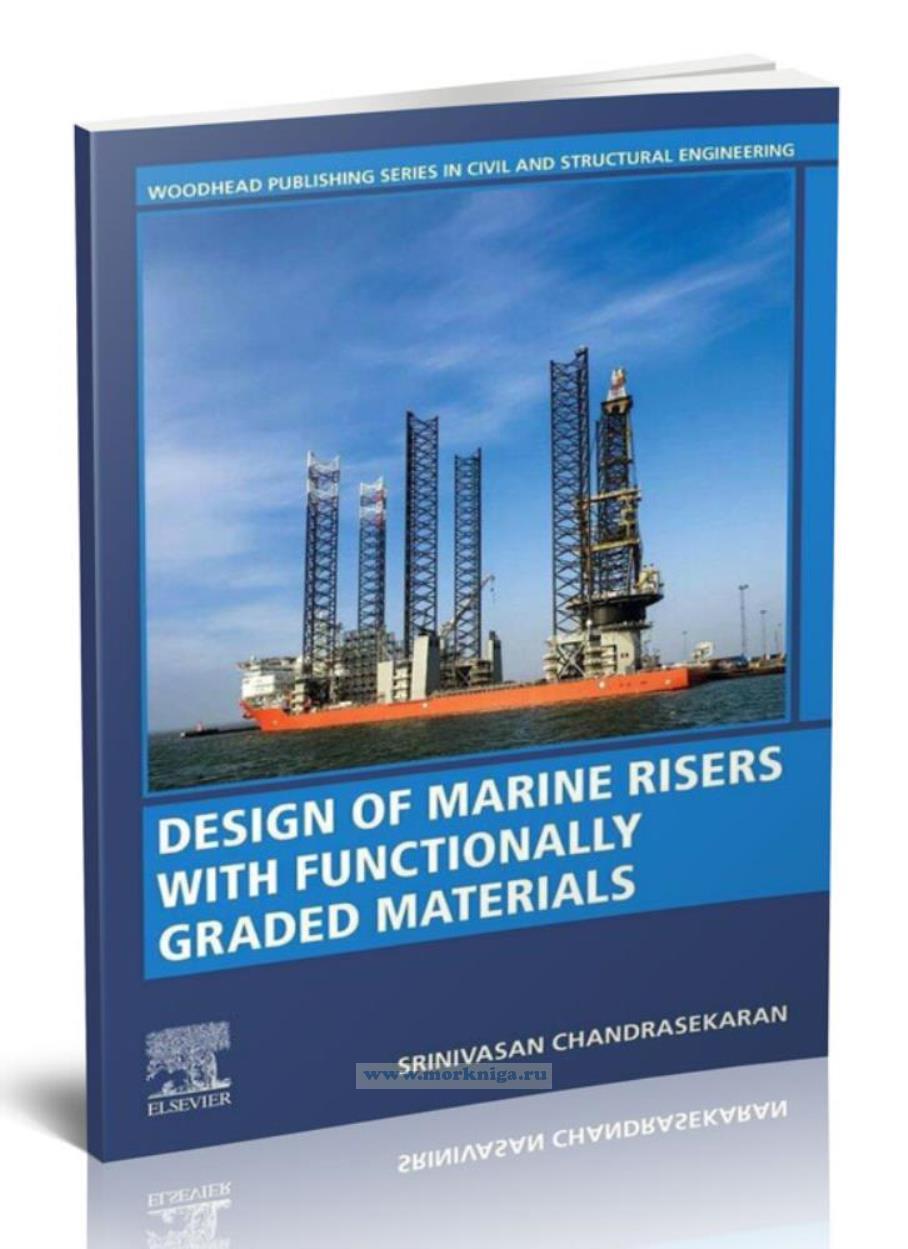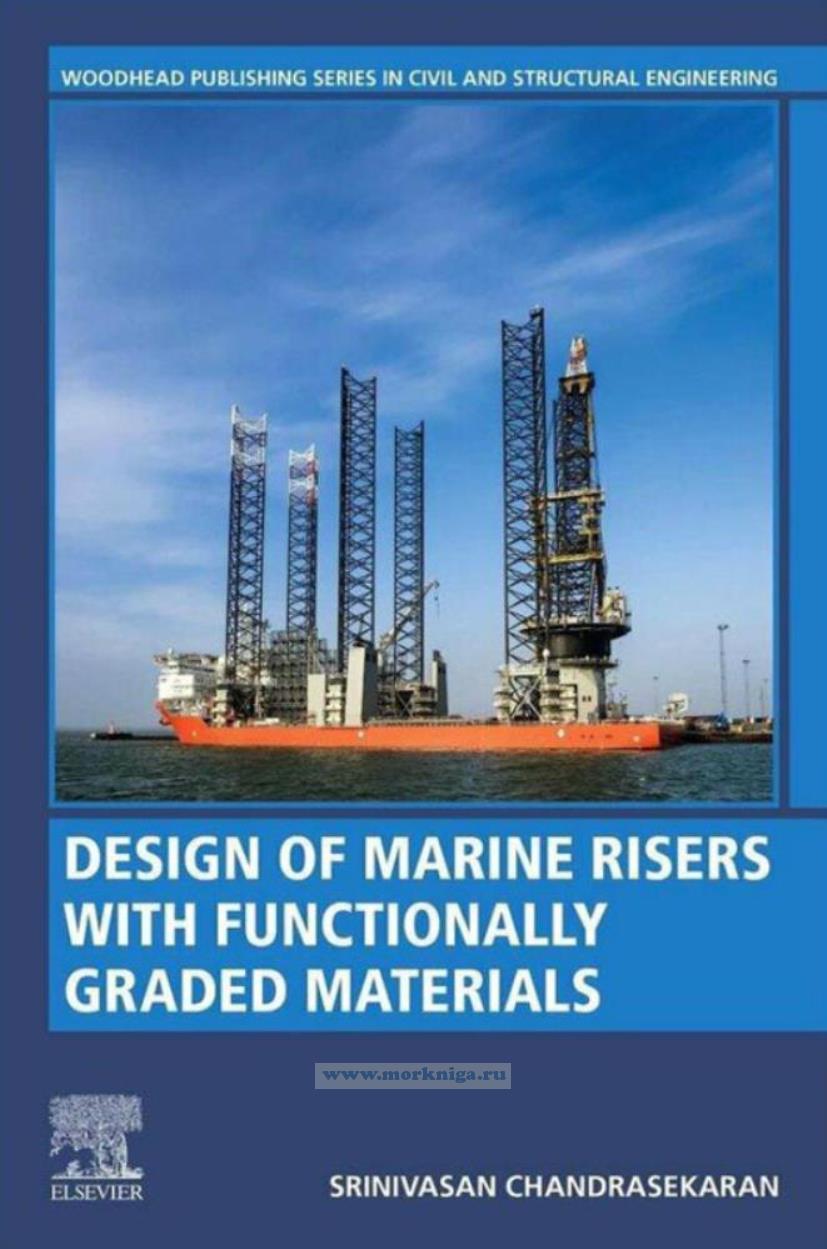Design of marine risers with functionally graded materials/–Я—А–Њ–µ–Ї—В–Є—А–Њ–≤–∞–љ–Є–µ –Љ–Њ—А—Б–Ї–Є—Е —Б—В–Њ—П–Ї–Њ–≤ –Є–Ј —Д—Г–љ–Ї—Ж–Є–Њ–љ–∞–ї—М–љ–Њ –Ї–ї–∞—Б—Б–Є—Д–Є—Ж–Є—А–Њ–≤–∞–љ–љ—Л—Е –Љ–∞—В–µ—А–Є–∞–ї–Њ–≤
–Ш–Ј–і–∞–љ–Є–µ –љ–∞ –∞–љ–≥–ї–Є–є—Б–Ї–Њ–Љ —П–Ј—Л–Ї–µ
Design of Marine Risers With Functionally Graded Materials explores the novelty of functionally grading materials for marine risers. The constituent elements are chosen to satisfy both the strength and service life requirements of marine risers in a corrosive environment. A combination of a variety of environmental loads that arise from waves, current, and those arising from the impact of vessels will result in the development of extreme stresses. It makes the analysis and design of marine risers, a complicated process. With progress in the research and scientific developments, several geometric forms of the production risers such as flexible risers, steel catenary risers, and hybrid risers are also deployed successfully for both exploration and production. The first chapter deals with the basics of marine risers, various geometric configurations, layout preferences for offshore platforms, and fatigue load issues. Besides, alternate materials used for marine risers are also briefly discussed.
Under the corrosive marine environment, a corrosion-resistant alloy of duplex stainless steel, functionally graded with carbon-manganese steel along with its inner layer, is examined. Detailed experimental studies carried out to assess both the mechanical and metallurgical properties are discussed in the second chapter. The interface strength of functionally graded materials (FGM), fabricated using cold metal transfer, gas metal arc welding, based on the wire arc additive manufacturing in the lab scale, is compared with an X52 carbon-manganese steel to highlight the superiority of the proposed FGM.
Contents
Preface
List of Figures
List of Tables
1. Marine risers: introduction
1.1 Introduction
1.2 Type of risers
1.3 Drilling riser
1.4 Completion and workover risers
1.5 Top-tensioned risers
1.6 Steel catenary risers
1.7 Flexible risers
1.8 Layout configurations
1.9 Riser components
1.10 Vortex-induced vibrations
1.11 Dynamics of risers
1.12 Corrosion in risers
1.12.1 Corrosion
1.13 Materials for risers
1.13.1 Steel
1.13.2 Titanium
1.14 Moorings
Exercise
Part A: Objective-type questions
Part B: Descriptive-type questions
2. Functionally graded materials for marine risers
2.1 Introduction
2.2 Functionally graded material
2.3 Wire arc additive manufacturing
2.4 Functionally graded material to the marine riser
2.5 Materials and manufacturing
2.6 Mechanical characteristics
2.7 Metal-transfer characteristics
2.8 X-ray computed tomography
2.9 Tension test
2.10 Structural properties
2.11 Microstructure analyses
2.12 Energy dispersive X-ray analysis
2.13 Microhardness
2.14 Fractography
2.15 Pitting corrosion
2.16 X-ray diffraction analysis
Exercise
Part A: Objective questions
Part B: Descriptive questions
3. Vortex-induced vibration
3.1 Introduction
3.2 Vortex-induced vibration
3.3 Vortex-induced motion
3.4 Lock-in phenomenon
3.5 Inline vortex-induced vibration
3.6 Suppression of vortex-induced vibration
3.7 Flow characteristics
3.8 Behavior of flexible members
3.9 Vortex-induced vibration suppression: Experimental investigations
3.10 Experimental setup
3.11 Effect of suppression on vortex-induced vibration
Exercise
Part A: Objective questions
Part B: Descriptive questions
4. Recent advancements in materials and offshore platforms
4.1 Introduction
4.2 Selection of materials
4.3 Marine environment
4.4 Titanium
4.4.1 Classifications and alloying elements
4.5 Composites
4.6 Nonferrous metals and other materials
4.7 Buoyancy materials and syntactic foams
4.8 Semisubmersible with postulated mooring failure
4.8.1 Semisubmersible
4.8.2 Numerical analyses
4.8.3 Postulated failure
4.8.4 Tension variation under postulated failure
4.9 Offshore triceratops with elliptical buoyant legs
4.9.1 Triceratops
4.9.2 Numerical analyses
Exercise
Part A: Objective-type questions
Part B: Descriptive-type questions
References
Index

